Memorial Options After Death: A Gentle Guide to What's Possible
Exploring memorial options after death? Discover compassionate guidance for honoring loved ones with thoughtful choices that respect your timeline and needs.

Key Takeaways
- Memorial options after death range from traditional services to contemporary alternatives, each offering different ways to honor your loved one's memory
- There's no universal timeline for making memorial decisions. Your readiness matters more than external expectations or cultural norms
- Personalizing memorial choices to reflect your loved one's values and personality creates deeper meaning than following prescribed formats
- Budget considerations are valid and don't diminish the significance of how you choose to remember someone important to you
- Emerging options like cremation solidification provide alternatives for families seeking different ways to maintain tangible connections
- Combining multiple memorial approaches allows you to create something uniquely meaningful rather than choosing a single path
Reflections on love, loss, and the ways we carry them.
When families ask me where to begin with memorial decisions, I often tell them this: Start from the softest place inside you. The place that whispers, not demands. Grief already asks so much of us. There’s no need to rush toward choices you’re not ready to make.
Over the years, I’ve seen how memorial options have expanded, gently widening the paths available to families who want something more personal, more attuned to the life they’re honoring. Traditional funerals still offer structure when the world feels upside down; celebrations-of-life create space for memory and storytelling; and newer options such as cremation solidification, allow families to hold something tangible, something touchable, when words run out.
I think of Lara, a mother I worked with last year. Six months after losing her son, she told me, voice trembling, “I’m ready for something… but I don’t know what.” The thought of a large gathering overwhelmed her, yet the idea of doing nothing felt wrong. When she learned about solidified remains—stones she could hold, keep, or share, her shoulders dropped. “This feels like him,” she said. “Quiet, simple, close.” Months later, after a small backyard gathering, she told me, “I finally felt peace, not because I followed a tradition, but because I followed my heart.”
That, to me, is the heart of memorial decision-making: not choosing what is expected, but choosing what is true.
Wherever you are in your grief, earlier, later, or somewhere in between, know this: you’re allowed to move slowly. You’re allowed to change your mind. And whatever you choose, done with love, will always be enough.
Cathy Sanchez Babao
Parting Stone Grief Coach
If you're reading this, you may be in that quiet space where you're beginning to wonder about possibilities. Not because anyone is pressuring you, but because something inside is gently asking, "What feels right for honoring this person I loved?"
That wondering is enough for now.
Memorial options after death encompass a wide spectrum of choices for honoring and remembering loved ones, including traditional services like funerals and burials, contemporary alternatives such as celebration-of-life gatherings, creative memorialization through art or nature-based tributes, and emerging options like cremation solidification. Each approach offers different ways to commemorate a life while respecting individual family needs, cultural backgrounds, and emotional readiness.
This article exists to show you what's possible without suggesting what you should do. You'll find information about traditional approaches, contemporary alternatives, and emerging possibilities. Some may resonate immediately. Others might feel completely wrong for your situation. Both responses are perfectly valid.
The families who find their way here are often 6-12 months into their grief, past the immediate shock but still navigating what it means to live in a world changed by loss. If that describes where you are, you're in the right place. If you're earlier or later in your experience, that's okay too.
There's no rush to decide anything today. This is simply information, available when and if you want it.
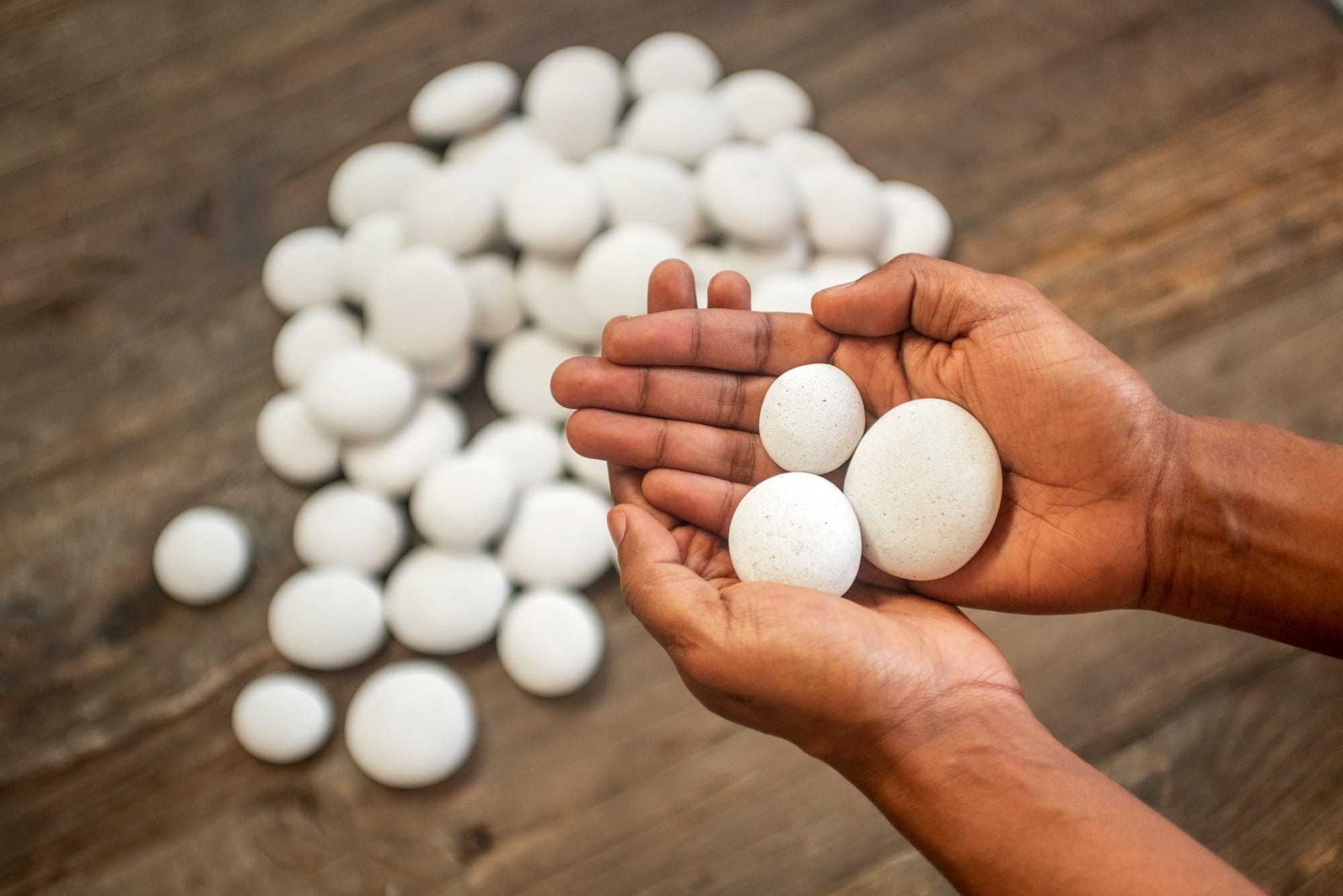
A New Way to Hold Close What Matters Most
We transform cremated remains into beautiful, touchable stones that bring comfort when you need it. Something you can hold, share, and keep close.
Understanding Your Memorial Options
The landscape of memorial choices has expanded significantly in recent years, offering families more ways to honor loved ones in personally meaningful ways. Understanding the full range of possibilities can help you recognize what might feel right for your unique situation.
Traditional Memorial Approaches
Traditional memorial services have provided comfort and structure for generations, offering familiar rituals during uncertain times. These time-honored approaches include funeral services with viewings, religious ceremonies, graveside services, and traditional burials with monuments or markers.
According to the National Funeral Directors Association, traditional funerals typically involve gathering within days of death, providing immediate community support during the acute phase of grief (National Funeral Directors Association, 2024). Many families appreciate having established protocols to follow when making decisions feels overwhelming.
Traditional burials create permanent physical locations where family members can visit, which some find deeply comforting. The ritual of selecting a casket, choosing a cemetery plot, and planning a formal service provides structure during a time when everything else feels uncertain.
For families with strong religious or cultural traditions, these established practices offer connection to heritage and community. They provide a framework that honors both the deceased and the living family's need for meaningful ritual.

Contemporary Alternatives
Contemporary memorial alternatives have emerged to serve families seeking different expressions of remembrance. These include celebration-of-life gatherings, memorial services without formal funeral elements, scattering ceremonies, home funerals, and green or natural burials.
The Cremation Association of North America reports that cremation rates have reached 60.5% nationally, reflecting changing preferences about end-of-life arrangements (Cremation Association of North America, 2024). This shift has opened conversations about what becomes possible when families aren't bound by traditional burial timelines.
Celebration-of-life gatherings often occur weeks or months after death, allowing time for travel arrangements and emotional adjustment. These events can take any form: gatherings at meaningful locations, informal receptions at family homes, or structured programs that focus on storytelling and memory sharing.
Memorial services separate from funeral services provide flexibility in timing and format. Some families hold multiple gatherings in different locations, recognizing that their loved one touched lives across geographical distances.
Teresa from San Diego, CA 🖤 shared: "We did a celebration of life 3 months after he passed. It gave us time to think about what he would have wanted instead of rushing decisions in those early days."
Emerging Possibilities
Innovation in memorialization continues to expand options for families. These newer approaches include cremation solidification (transforming cremated remains into touchable memorial stones), memorial reefs, tree planting programs, space memorial services, and bio urns that support new growth.
Each emerging option addresses different needs families express about maintaining connections with loved ones. Some seek tangible, portable ways to keep their loved one close. Others want tributes that contribute to environmental restoration or support causes their loved one cared about.
Research from the American Psychological Association suggests that continuing bonds with deceased loved ones, rather than "letting go," represents a healthy aspect of grief for many people (American Psychological Association, 2023). Emerging memorial options often support these ongoing connections in new ways.
The expansion of choices means you're less constrained by what has been traditionally available. If none of the conventional options felt quite right, that discomfort might have been pointing you toward something different.
Memorial Options Comparison
| Memorial Approach | General Description | Timeline Flexibility | Personalization Potential | Investment Range | May Suit Those Who... |
|---|---|---|---|---|---|
| Traditional Funeral Service | Formal gathering with viewing, service, and burial | Usually within 3-7 days | Moderate (within traditional structures) | $7,000-$12,000+ | Value established ritual and immediate community gathering |
| Celebration of Life | Informal gathering focused on memories and stories | Flexible (weeks to months) | High (format completely customizable) | $1,000-$5,000 | Prefer personalized, less formal commemorations |
| Memorial Service Only | Ceremony without body present | Very flexible | High (no constraints from body presence) | $500-$3,000 | Want separation between disposition and commemoration |
| Green/Natural Burial | Environmentally conscious burial without traditional preservation | Within days to weeks | Moderate to high | $2,000-$5,000 | Have environmental values or natural connection |
| Cremation with Traditional Urn | Cremation followed by urn placement or storage | Flexible (no immediate decisions required) | Moderate (through urn selection and placement) | $1,500-$4,000 | Appreciate having time to decide next steps |
| Cremation Solidification | Transformation of remains into touchable memorial stones | Very flexible (stones remain with family) | High (stones can be shared, carried, displayed) | $2,495 | Seek tangible, portable connection without traditional containers |
| Memorial Reef or Tree | Remains incorporated into environmental restoration | Moderate flexibility | Moderate (location and contribution type) | $3,000-$7,500 | Want lasting environmental legacy |
| Direct Cremation/Burial | Disposition only, no service | Immediate | Family creates own commemoration later | $700-$2,500 | Need minimal cost or prefer private family decisions |

Considerations for Different Situations
Every memorial decision exists within a context of cultural background, practical realities, family dynamics, and personal values. Understanding how these factors might influence your choices can clarify what matters most in your situation.
Cultural and Religious Factors
Cultural and religious traditions often provide guidance about appropriate memorial practices, though how strictly families follow these guidelines varies widely. Some find deep comfort in fulfilling traditional expectations, while others adapt practices to fit contemporary circumstances.
According to research published in the Journal of Cross-Cultural Psychology, memorial practices serve important functions in helping communities process collective grief while maintaining cultural continuity (Rosenblatt, 2008). Understanding your own relationship with these traditions, whether you feel bound by them or free to interpret them, informs your decision-making.
Some religious traditions have specific requirements about timing, burial versus cremation, or funeral service elements. If you're unsure about your tradition's guidelines, religious leaders can usually explain both the requirements and the areas where interpretation is possible.
For interfaith families or those with mixed cultural backgrounds, memorial planning sometimes involves navigating different expectations. Some families honor multiple traditions, while others create entirely new approaches that respect diverse heritages without trying to perfectly satisfy all conventional expectations.
Your relationship with cultural and religious tradition is yours to define. Whether you follow established practices closely, adapt them thoughtfully, or create something entirely new, the choice reflects what feels authentic to your specific circumstances.
Budget Considerations With Sensitivity
Financial realities profoundly impact memorial decisions, yet many people feel uncomfortable discussing costs during grief. This discomfort serves no one well. Being honest about budget constraints doesn't diminish love or create inferior memorials.
The Federal Trade Commission's Funeral Rule protects consumers by requiring funeral homes to provide itemized price lists and prohibiting package requirements that force unnecessary purchases (Federal Trade Commission, 2024). Understanding your rights helps you make informed decisions without pressure.
Memorial costs vary dramatically based on choices made. Traditional full-service funerals average $7,000-$12,000 or more, while direct cremation might cost $700-$2,500. Neither price point determines the memorial's meaningfulness.
Some families find that spending more provides comfort, feeling they honored their loved one through significant investment. Others find that minimal spending allows them to direct resources toward living family needs or causes their loved one supported. Both choices carry validity.
Consider what your loved one would have wanted regarding expense. If they valued practicality, honoring that through cost-conscious choices respects their perspective. If they appreciated ceremony and tradition, investing in those elements honors their values.
If budget constraints feel limiting, remember that the most meaningful memorial aspects often cost little. The stories shared, the people who gather, the memories held, the values carried forward into changed lives: these elements transcend financial investment entirely.
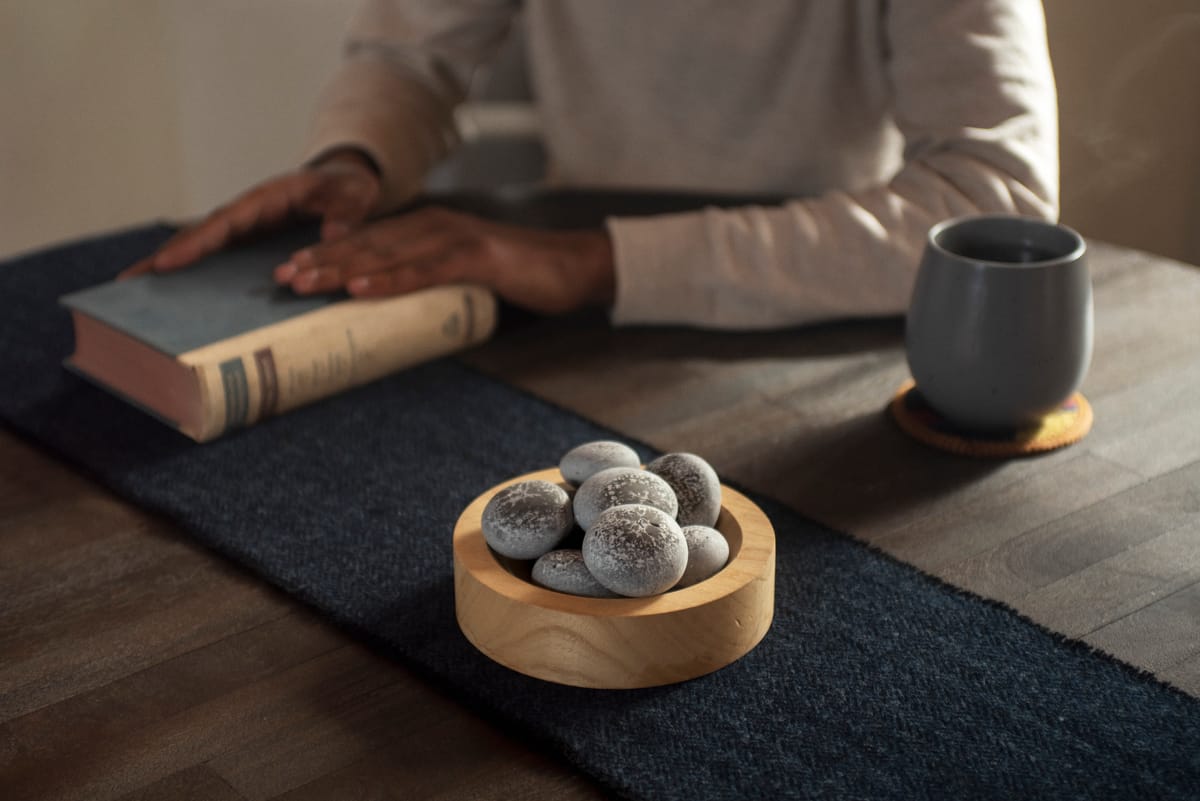
Timeline Flexibility
The question "when should I decide?" carries no universal answer. Despite cultural pressures suggesting certain timelines, your readiness operates on its own schedule.
Traditional funerals occur within days, partly for practical reasons but also to provide immediate ritual. This timing serves some families beautifully, offering structure when decisions feel impossible. For others, that speed feels overwhelming, resulting in choices made before emotional space existed for thoughtful consideration.
Cremation fundamentally changes timeline pressures. Nothing requires immediate decision-making beyond the cremation itself. The National Funeral Directors Association notes that an increasing number of families are separating disposition from memorial planning, taking weeks or months to plan meaningful tributes (National Funeral Directors Association, 2024).
Some families make memorial decisions within weeks. Others take a year or longer. Neither timeline is wrong. The "right" time arrives when you feel ready, not when calendar dates or other people's expectations suggest you should be ready.
Physical locations for urns, whether in columbariums, homes, or elsewhere, can change. Families sometimes make interim choices, recognizing they might want something different later. This flexibility removes the pressure of making permanent decisions during temporary emotional states.
If you're reading this months after your loss and haven't yet decided on memorial plans, that's okay. If you're years into grief and reconsidering initial decisions, that's okay too. Readiness doesn't follow predictable patterns.

Family Dynamics and Decision-Making
Memorial decisions often involve multiple family members with different preferences, grief expressions, and visions for appropriate tribute. Navigating these dynamics with respect and clarity can prevent lasting conflict during an already difficult time.
Research published in Family Relations Journal indicates that family disagreements about funeral arrangements can create long-term relational strain, making thoughtful communication particularly important (Castle & Phillips, 2003). Understanding that different family members may need different things can open space for creative solutions.
Some families designate decision-making authority to the person who held the closest relationship with the deceased. Others seek consensus, ensuring all immediate family members feel heard. Still others split decisions, with different people taking responsibility for different aspects.
Conflict often emerges when family members are at different points in their grief. Someone ready to plan a celebration-of-life gathering might clash with someone still in acute pain who can't imagine gathering at all. Both responses to grief are valid, even when they create practical complications.
When family members hold different visions, consider whether multiple memorial approaches might honor everyone's needs. Perhaps a small private gathering serves those seeking intimacy while a larger celebration later serves those wanting community connection.
If you're making decisions alone because you were the sole close relationship, that isolation carries its own challenges. Seeking support from friends or grief counselors can provide the perspective and validation that family might have offered.

Personalizing Your Memorial Choice
Generic memorial services sometimes leave families feeling disconnected from the person being honored. Personalization transforms memorial choices from standard practices into authentic expressions of specific lives and relationships.
Reflecting Your Loved One's Values
The most meaningful memorial choices often align with the deceased person's life values, interests, and personality rather than following conventional templates.
If your loved one cared deeply about environmental conservation, a green burial or memorial tree might honor that commitment more authentically than a traditional service would. If they valued practicality and simplicity, an understated memorial might feel more true to their character than an elaborate ceremony.
Consider what your loved one actually enjoyed rather than what's typically done. Someone who hated being the center of attention might have preferred a small gathering or no formal service at all. Someone who loved bringing people together might have appreciated a celebration designed to connect their various friend circles.
The Conversation Project research shows that people who have explicit discussions about end-of-life wishes report feeling more peace about eventual decisions (The Conversation Project, 2022). If your loved one shared preferences during life, honoring those wishes provides clear direction during uncertain times.
When preferences weren't explicitly stated, considering consistent life patterns often reveals what would feel authentic. How did they typically celebrate? What brought them joy? What did they find meaningful versus obligatory?
James from Phoenix, AZ reflected: "Dad always said he wanted to 'keep things simple.' We almost did a big traditional funeral because that's what you do, but then we realized we'd be ignoring exactly what he asked for his whole life."
Combining Multiple Memorial Approaches
Nothing requires choosing only one memorial approach. Many families create layered commemorations that serve different needs and honor various aspects of their loved one's life.
You might have a small private ceremony immediately following death for close family, then plan a larger celebration-of-life gathering months later when extended family and friends can travel. Some families hold events in multiple cities where their loved one lived and built communities.
Cremated remains can be divided, allowing some to be buried in a family cemetery while others are scattered in a meaningful location. Solidified remains created through cremation solidification can be shared among family members, each person keeping memorial stones that feel like maintaining a tangible connection.
Memorial approaches can also combine physical and experiential elements. A family might plant a memorial tree, establish a scholarship in their loved one's name, create an online memory collection, and hold annual gatherings on significant dates.
The flexibility of contemporary memorial options means you can address different needs through different approaches rather than trying to force one solution to serve all purposes.
Creating Meaningful Rituals
Ritual provides structure for expressing what words often cannot capture. Creating personalized rituals, whether within traditional services or as standalone practices, offers ways to mark significance during grief.
Meaningful rituals don't require elaborate planning or special expertise. Simple acts performed with intention carry profound weight. Lighting candles while sharing memories, reading favorite poems or passages, playing meaningful music, or incorporating symbolic objects all create ritual moments.
Some families create new traditions they'll repeat annually: gathering on birthdays or death anniversaries, visiting meaningful locations, performing acts of service their loved one would have appreciated, or sharing stories that keep memory alive.
Rituals can be private or communal, one-time events or ongoing practices. What matters is the intention behind them and their resonance with the people participating.
Consider what actions would feel meaningful rather than merely expected. If your loved one's favorite activity was hiking, perhaps a memorial hike serves your need for ritual better than a formal indoor service would. If they loved cooking, perhaps gathering around shared food honors them more authentically than a traditional reception.
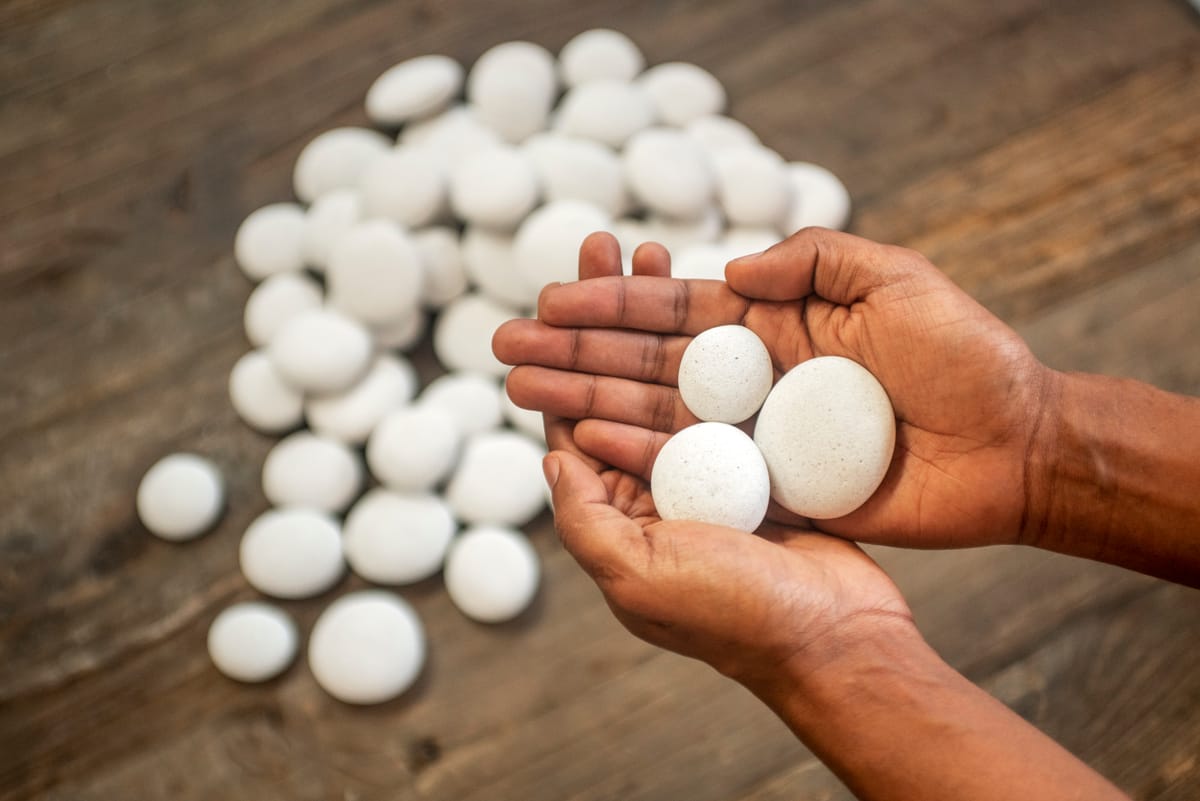
Practical Aspects to Consider
Beyond emotional considerations, memorial decisions involve practical planning, professional relationships, and logistical coordination. Understanding these practical elements helps ensure your vision becomes reality.
Planning and Coordination
Memorial planning involves numerous decisions and coordinating moving pieces. Creating a clear plan helps manage the logistics while preserving emotional energy for what matters most.
If planning a formal service or celebration, consider these practical elements: venue selection and booking, invitations or announcements, program creation, speaker or participant coordination, food and beverage arrangements if applicable, and technology needs for slideshows or music.
Starting with core priorities helps prevent becoming overwhelmed by details. What elements matter most? What could be simplified or eliminated? What aspects need special attention versus what can be delegated or kept simple?
Many families find that designating specific people to handle different aspects prevents any single person from carrying the entire burden. One person might coordinate the venue while another handles food arrangements and a third manages invitations.
Timeline planning requires building in flexibility. Unexpected emotions, family conflicts, or logistical complications can derail overly ambitious schedules. Allowing buffer time prevents additional stress when things don't go exactly as planned.
For celebrations happening months after death, regular check-ins with key participants help ensure everyone remains aligned about plans and expectations. What felt right when first discussed might need adjustment as time passes and grief evolves.
Working With Professionals
Funeral directors, celebrants, clergy, and other professionals bring expertise that can ease planning burdens, though understanding what to expect from these relationships helps ensure they serve your needs rather than their own interests.
The Federal Trade Commission requires funeral providers to give you an itemized price list and prohibits requiring package purchases, protecting your right to select only the services you actually want (Federal Trade Commission, 2024). Understanding these protections helps you advocate for yourself during vulnerable times.
Good professionals listen more than they prescribe. They should ask about your loved one, your family's needs, and your vision rather than immediately suggesting standard packages or traditional approaches.
Don't hesitate to interview multiple providers or ask detailed questions about costs, options, and flexibility. Professionals experienced in serving grieving families understand that clarity helps rather than causes discomfort.
If working with religious or cultural leaders, clarify early what requirements exist versus what represents preference or tradition. This distinction helps you make informed choices about which elements to maintain and which might be adapted.
You can change providers if initial relationships don't feel supportive. While starting over feels difficult, working with someone who respects your needs matters more than maintaining convenience.
Questions to Ask Providers
Whether working with funeral homes, cremation providers, or memorial service coordinators, asking clear questions ensures you understand what you're receiving and what costs are involved.
Essential questions include: What is the complete itemized cost breakdown? What elements are required versus optional? What flexibility exists for personalizing services? What timeline do various options require? What happens if we need to change plans? Are there additional costs not included in quoted prices?
For cremation providers specifically, ask: What is included in basic cremation services? What options exist for the cremated remains afterward? What containers or urns are included versus available for additional cost? How long do we have to make decisions about final disposition?
If considering emerging options like cremation solidification, biodegradable urns, or memorial reefs, ask: How does this process work? What is the timeline from beginning to completion? What guarantees or quality assurances exist? Can we see examples of finished products? What happens if we're dissatisfied with results?
Understanding refund and cancellation policies matters even though contemplating changes feels difficult. Circumstances shift, family dynamics evolve, and financial situations change. Knowing your options provides security during uncertain times.

Emerging Options Worth Knowing About
Memorial practices continue evolving, with innovations addressing needs that traditional options sometimes don't fully meet. Understanding these emerging possibilities expands what you might consider for your situation.
Cremation Solidification: An Emerging Alternative
Some families exploring memorial options after death find themselves uncertain about traditional urns or scattering but still wanting to maintain tangible connections with their loved one. An emerging option called cremation solidification addresses this specific need through a completely different approach.
Cremation solidification transforms cremated remains into 40-80+ smooth, touchable memorial stones through a scientific process. Rather than dealing with ash in containers, families receive solid stones they can hold, display, carry, or share among family members. This represents a complete alternative to traditional cremated remains rather than just another memorial product.
The process allows families to divide memorial stones among multiple people, each person keeping some stones that feel like maintaining a physical connection. Some families describe this as feeling more natural than traditional urn storage, particularly when multiple family members want to keep their loved one close.
This may resonate if you've felt uncertain about traditional ashes stored in a single location. The stones can travel with families, sit on shelves or in gardens, or be carried in pockets or purses without the concerns that sometimes accompany traditional cremated remains. Traditional urns remain meaningful choices for many families, and solidified remains simply offer a different possibility for those seeking alternatives.
The investment for cremation solidification of human remains starts at $2,495, positioning it between basic cremation with simple containers and traditional full-service funerals. Like all memorial options, this works beautifully for some families and not for others. There's no pressure to choose this or any option until you're ready.
Linda from Seattle, WA shared her experience: "I didn't know what to do with mom's ashes for two years. They sat in a closet and I felt terrible about it but couldn't figure out what felt right. When I learned about solidification, something clicked. Now my sister and I each have stones we keep close, and it feels so much more natural than that urn sitting hidden away."
Other Innovative Approaches
Beyond cremation solidification, several other emerging options address different family needs and values.
Memorial reefs combine cremated remains with environmentally safe materials to create artificial reef structures that support marine ecosystems. Organizations like Eternal Reefs place these structures in permitted ocean locations, creating living memorials that contribute to ocean conservation (Eternal Reefs, 2024).
Biodegradable urns designed to support tree growth allow families to plant memorial trees that incorporate cremated remains into the root system. Companies like The Living Urn provide complete kits with urns, soil mixtures, and tree selections appropriate for different climates.
Memorial diamonds represent another emerging option, with companies using carbon from cremated remains to create lab-grown diamonds. This allows some families to wear their loved one in jewelry, though costs typically range from $2,000 to $20,000 depending on diamond size and quality.
Space memorial services, offered by companies like Celestis, launch small portions of cremated remains into space on memorial spaceflights. For families whose loved ones had fascination with space exploration, this option creates literal connections to the cosmos.
How to Evaluate New Options
As memorial practices evolve, evaluating unfamiliar options requires balancing openness to innovation with appropriate skepticism about untested services.
Consider these factors when evaluating any emerging memorial option: Is the company established with verifiable customer experiences? What guarantees or quality assurances do they provide? Does the option align with your values and your loved one's values? What happens if you're dissatisfied with results? Are there reviews from independent sources rather than only company testimonials?
The Better Business Bureau and state funeral regulatory agencies provide resources for verifying company legitimacy and reviewing complaint histories. Taking time to research unfamiliar providers protects you during vulnerable times when making clear-headed business decisions feels difficult.
Trust your instincts about whether new options feel right or feel like gimmicks. Innovation sometimes provides genuinely helpful alternatives. Other times it represents marketing to grieving families without offering real value. The difference usually becomes clear when you consider whether the option addresses authentic needs or just sounds impressive.
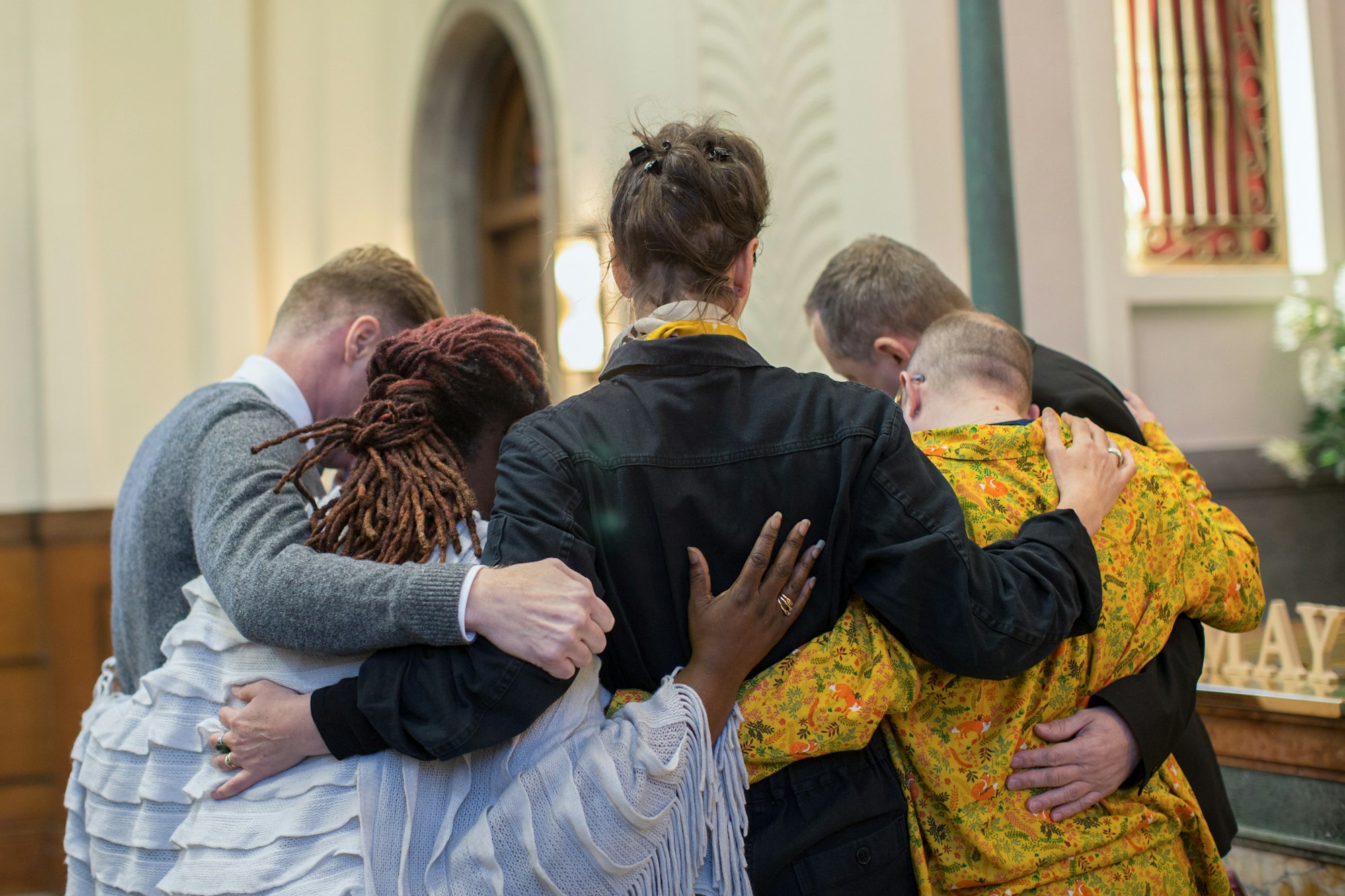
When You're Ready to Decide
Decision-making during grief operates differently than decision-making during ordinary circumstances. Understanding what readiness might feel like and giving yourself permission to approach decisions gradually can ease the pressure many families experience.
Signs of Readiness (Not Prescriptive)
Readiness to make memorial decisions looks different for different people. You might notice some of these signs: thinking about options feels more curious than painful, you can imagine gathering without feeling overwhelmed, considering your loved one in past tense feels more natural, practical considerations enter your awareness alongside emotional ones, or you feel pulled toward certain choices rather than paralyzed by all choices.
These signs don't appear on predictable schedules. Some people feel ready within weeks while others need years. Neither timeline suggests anything about love, respect, or appropriate grieving.
You might also discover that partial readiness exists. Perhaps you feel ready to plan a celebration-of-life gathering but not ready to decide about cremated remains. Perhaps you know you want something nontraditional but haven't identified what specifically. Partial decisions can move forward while other elements wait for clarity.
If thinking about memorial options still feels too overwhelming, that feeling contains important information. It might mean you need more time. It might mean you need support from others in the planning process. It might mean none of the options you've encountered feel right yet and you need to keep exploring.
Trust that you'll know when you're ready, even if you can't explain how you know.
Permission to Change Your Mind
Initial memorial decisions don't require being permanent choices. As grief evolves and circumstances change, what felt right initially might feel different later.
Urns can be moved from one location to another. Scattered ashes can be followed by memorial markers in meaningful locations. Families who initially chose simple ceremonies sometimes plan additional gatherings years later when they feel ready for more extensive commemoration.
Some families discover that their initial choice was made under pressure or before they understood all available options. Revisiting decisions doesn't dishonor earlier choices or the person you lost. It represents responding to new information and evolved understanding.
Changing your mind about memorial choices is allowed. This permission matters because many people operate under unspoken assumptions that first decisions must be final decisions.
If cost prevents changing earlier decisions, smaller adjustments might still address what feels unsettled. Adding a memorial plaque costs less than relocating a burial. Creating a home memorial space costs nothing but intentionality. Annual gathering traditions can begin at any point.
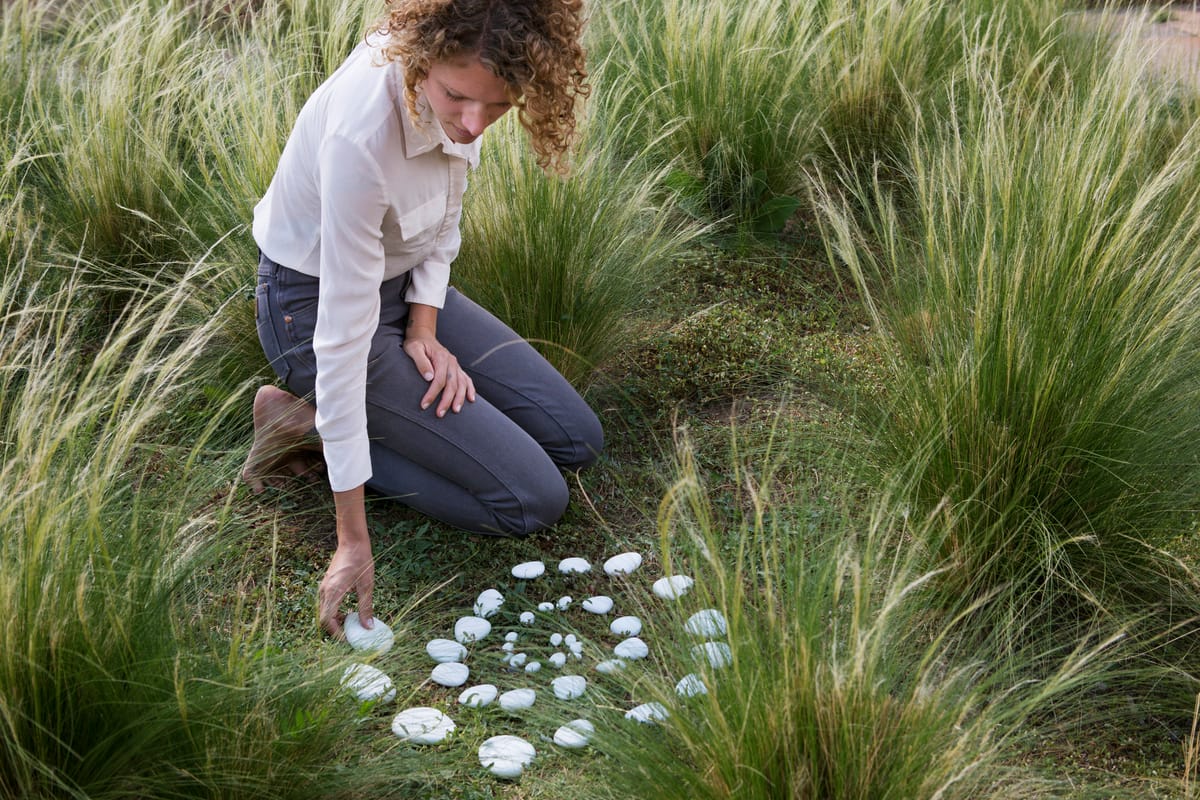
Next Steps When You Choose
Once clarity emerges about what feels right, taking action involves breaking larger visions into manageable steps.
Start by identifying whether your choice requires professional services or whether you can implement it independently. Celebrations-of-life, memorial gatherings, and personal rituals often require only venue booking and invitation coordination. Burial arrangements, cremation services, or specialized memorial options require working with established providers.
If working with providers, get detailed cost estimates in writing before committing. Ask about cancellation policies and ensure you understand what's included versus what carries additional charges. Price comparison among multiple providers often reveals significant differences for similar services.
Create realistic timelines that account for coordination needs, family member availability, and your own energy levels during grief. What seems manageable in planning might feel overwhelming when trying to execute while navigating daily grief. Build in flexibility.
Consider delegating aspects of planning to people who want to help. Many friends and family members genuinely want to support you but don't know how. Specific tasks like coordinating food, creating programs, or managing invitations give them concrete ways to serve while reducing your burden.
Remember that memorial planning isn't about creating perfect events or making ideal choices. It's about honoring someone important while taking care of yourself and your family during difficult times. Whatever you choose, approached with love and intention, will be enough.

Closing Thoughts
The memorial options after death landscape offers unprecedented choice. This abundance can feel overwhelming or liberating, depending on your perspective and where you are in your grief experience.
What matters most isn't which specific option you choose but whether your choice feels authentic to your relationship with the person you lost and supportive of your continuing grief experience. The "right" memorial decision is the one that honors both your loved one and your own needs during this difficult time.
Some families know immediately what feels right. Others explore options for months or years before clarity emerges. Some make decisions quickly and feel settled. Others revisit and adjust their choices multiple times. All of these patterns represent valid ways of navigating loss.
You don't have to decide everything today, this week, or even this year. Memorial planning can happen gradually, with each decision made when you feel ready rather than according to external timelines or expectations.
If you're still exploring, that's exactly where you should be. If you've found an option that resonates, trust that knowing. If nothing quite feels right yet, that information matters too. Sometimes the absence of clarity points toward needing more time, more options, or different questions.
Whatever your timeline, whatever your choice, you're doing this the right way because you're doing it in a way that respects both your loss and your continuing life. That respect, that care, that intention: those elements create meaningful memorials regardless of which specific option you ultimately choose.
FAQ Section
What are the different types of memorial options after death?
Memorial options after death include traditional funerals with burial, cremation with urn placement or scattering, celebration-of-life gatherings, memorial services without the body present, green or natural burials, cremation solidification into memorial stones, memorial reefs, tree planting programs, and memorial diamonds. Each option serves different family needs, values, and preferences, with no single choice being universally appropriate for all situations.
How do I choose the right memorial option for my loved one?
Choosing the right memorial option involves considering your loved one's stated preferences if they shared them, reflecting on their values and personality, accounting for family dynamics and multiple perspectives, acknowledging cultural or religious traditions you wish to honor, being realistic about budget constraints, and assessing your own emotional readiness for different types of commemoration. The right choice is one that feels authentic to your specific relationship and circumstances rather than what others expect or what seems most common.
Can you have a memorial service without a traditional funeral?
Yes, memorial services can occur completely independently from funerals. Many families choose cremation or direct burial without formal funeral services, then plan memorial gatherings weeks or months later when they feel more emotionally ready and when extended family can travel. Memorial services offer more flexibility in timing, location, and format than traditional funerals since they don't involve the body being present, allowing families to create personalized commemorations that reflect their loved one's life and values.
What are alternatives to traditional funerals and burials?
Alternatives to traditional funerals and burials include celebration-of-life gatherings that focus on memories rather than mourning, direct cremation followed by personalized memorialization, green or natural burials that minimize environmental impact, cremation solidification that transforms remains into touchable memorial stones, memorial reefs that contribute to ocean ecosystems, tree planting programs that create living memorials, home funerals that allow families to care for their loved one without professional intervention, and memorial services in meaningful non-traditional locations.
How much time should I take before deciding on memorial arrangements?
There is no prescribed timeline for memorial decisions. While traditional funerals typically occur within days of death, cremation removes immediate timeline pressures, allowing families to take weeks, months, or even years to plan meaningful tributes. Your readiness matters more than calendar dates or cultural expectations. Some families feel clarity quickly while others need extended time to consider options and process grief before making decisions. Both patterns are completely normal and appropriate.
What should I consider when choosing between burial and cremation?
When choosing between burial and cremation, consider religious or cultural traditions that may have specific guidelines, environmental values regarding land use and embalming chemicals, long-term maintenance responsibilities for burial plots, flexibility for memorial options afterward, budget differences between the two approaches, whether you want a specific location for visiting, and how various family members feel about each option. Neither choice is inherently better; the appropriate decision depends on your specific values, circumstances, and preferences.
Can memorial choices be changed after the initial decision?
Yes, many memorial choices can be adjusted after initial decisions. Urns can be relocated, scattered ashes can be followed by memorial markers, simple ceremonies can be supplemented with additional gatherings later, and memorial approaches can evolve as grief changes and family needs shift. Initial decisions made during acute grief don't need to remain permanent. Families often revisit and revise memorial plans as they gain clarity about what feels most meaningful, and making adjustments doesn't dishonor earlier choices or the person who died.
References
American Psychological Association. (2023). Grief: Coping with the loss of your loved one. https://www.apa.org/topics/grief
Castle, J., & Phillips, W. L. (2003). Grief rituals: Aspects that facilitate adjustment to bereavement. Family Relations Journal, 52(3), 190-197.
Cremation Association of North America. (2024). Annual statistics report: Cremation trends in North America. https://www.cremationassociation.org
Eternal Reefs. (2024). Memorial reef burial at sea. https://www.eternalreefs.com
Federal Trade Commission. (2024). Shopping for funeral services. https://consumer.ftc.gov/articles/shopping-funeral-services
National Funeral Directors Association. (2024). 2024 NFDA cremation and burial report. https://www.nfda.org
Rosenblatt, P. C. (2008). Grief across cultures: A review and research agenda. In M. S. Stroebe, R. O. Hansson, H. Schut, & W. Stroebe (Eds.), Handbook of bereavement research and practice: Advances in theory and intervention (pp. 207-222). American Psychological Association.
The Conversation Project. (2022). Starter kit: A guide for talking about what matters most. https://theconversationproject.org












